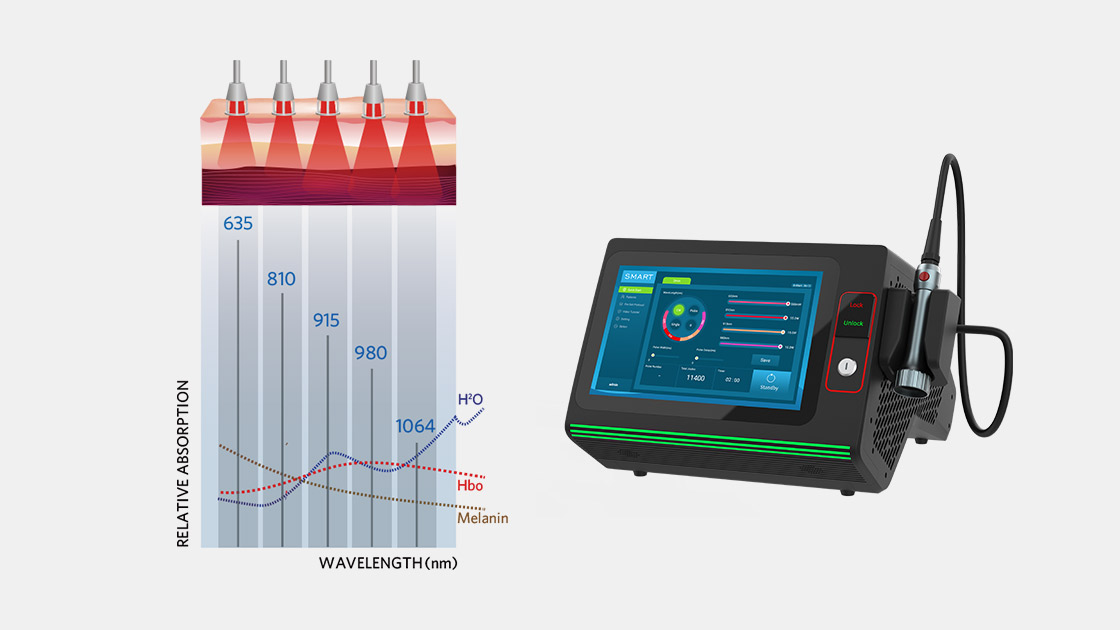Page Contents
Introduction to Class IV Therapy Laser
Class IV therapy laser represents a significant advancement in medical treatments. These powerful devices operate at a higher wattage than their lower-class counterparts. This enables deeper penetration into tissues. They effectively target a range of musculoskeletal issues, chronic pain conditions, and inflammation. Healthcare providers seeking non-invasive treatment options find Class IV therapy lasers invaluable. They offer benefits like accelerated tissue repair, pain reduction, and improved patient outcomes.
How Does Class IV Deep Tissue Therapy Work?
Class IV deep tissue laser therapy delivers focused laser light energy into the affected area. This energy penetrates the skin and underlying tissues. It interacts with cellular structures in a process called photobiomodulation. The laser light stimulates the mitochondria within cells. This increases the production of adenosine triphosphate (ATP). ATP is essential for cellular repair and regeneration. The increased ATP production enhances cellular function, reduces inflammation, and promotes faster healing. The heat generated by the laser also improves blood flow to the area. This aids healing by delivering more oxygen and nutrients to the damaged tissues.
Who Is a Good Candidate for Class IV Therapy Laser?
Class IV therapy lasers are suitable for a wide range of patients:
Chronic Pain Conditions: Patients with arthritis, lower back pain, and neuropathy benefit significantly. The treatment reduces inflammation and pain, improving quality of life.
Acute Injuries: Athletes and individuals with sprains, strains, and soft tissue damage find relief through the laser’s healing properties.
Post-Surgical Recovery: Post-surgical patients benefit from reduced recovery times and improved healing. The therapy promotes tissue regeneration and reduces postoperative pain and inflammation.
Musculoskeletal Disorders: Conditions like tendinitis, bursitis, and plantar fasciitis respond well to Class IV laser therapy, providing an alternative to more invasive treatments.
Wound Healing: Patients with slow-healing wounds, such as diabetic ulcers, experience faster recovery due to the laser’s enhanced tissue repair capabilities.
How Often Should I Receive Class IV Deep Tissue Laser Therapy?
The frequency of Class IV deep tissue laser therapy depends on the specific condition, its severity, and the patient’s response. Typically, a course of treatment might include:
Acute Conditions: Patients may require 3 to 5 treatments per week initially. As the condition improves, the frequency can be reduced.
Chronic Conditions: Chronic conditions often need a more prolonged treatment plan. Patients might start with 2 to 3 sessions per week and gradually reduce to maintenance treatments once a month or as needed.
Post-Surgical Recovery: Post-surgical patients may need more frequent sessions initially, followed by a tapering schedule as healing progresses.
Each session usually lasts between 5 to 20 minutes, depending on the size and depth of the area being treated. Continuous assessment by the healthcare provider will help tailor the treatment plan to the patient’s evolving needs.
Choosing the Right Class IV Therapy Laser
Selecting the appropriate Class IV therapy laser for your practice involves several factors:
Power Output: Higher power lasers offer deeper tissue penetration and shorter treatment times. However, they require careful handling to avoid overheating tissues.
Wavelength: The effectiveness of laser therapy largely depends on the wavelength. Class IV lasers typically operate in the range of 800 to 1064 nanometers, effective for deep tissue penetration.
Portability and Ergonomics: Depending on your practice setting, the portability and ease of use of the laser device can be critical. Ergonomically designed devices that are easy to maneuver enhance the provider’s ability to deliver precise treatments.
User Interface: A user-friendly interface simplifies operation, allowing for more efficient treatment sessions and reducing the learning curve for new practitioners.
Manufacturer Support and Warranty: Opt for devices from reputable manufacturers that offer robust customer support and comprehensive warranties. This ensures reliability and assistance when needed.
In conclusion, integrating Class IV therapy lasers into a healthcare practice can significantly enhance treatment capabilities for various conditions. By understanding the technology, patient candidacy, treatment protocols, and how to select the right device, healthcare providers can offer effective, non-invasive solutions that improve patient outcomes and satisfaction.
